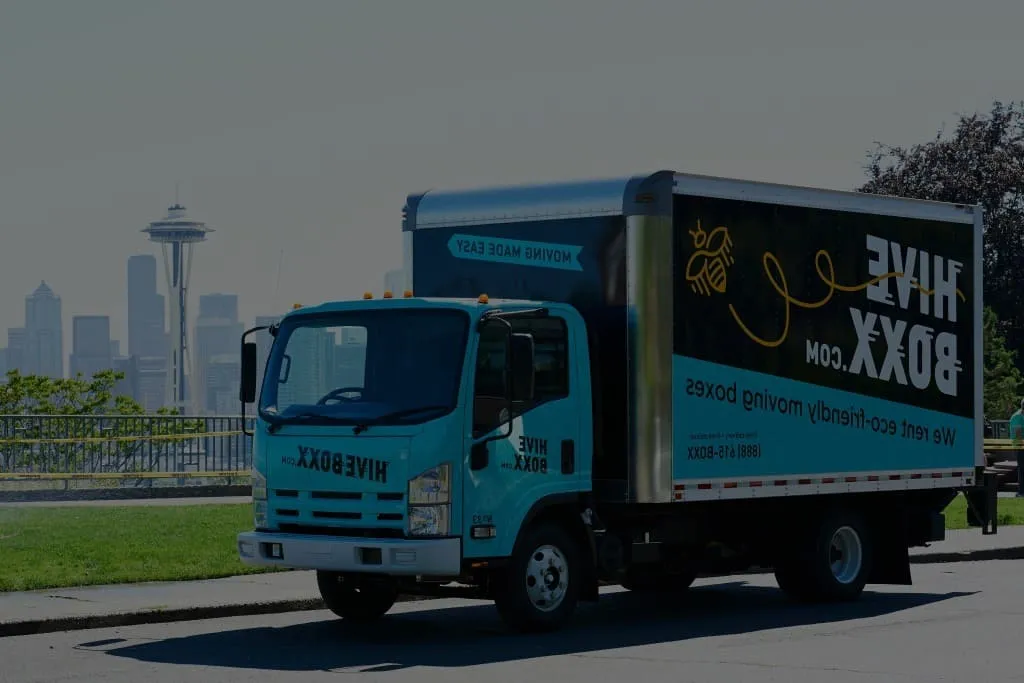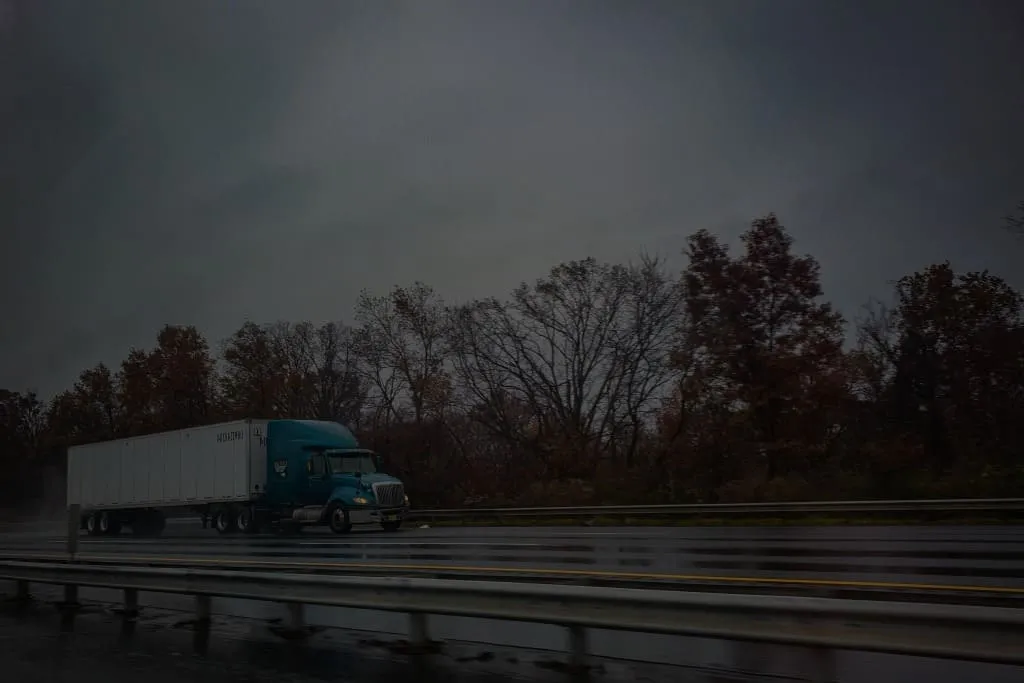What To Look for In Cross-Country Movers
Proper Registration
A reputable moving company that transports across state lines is federally required to be registered with the FMCSA. In addition to asking the mover directly, you can search the agency’s website to see if a mover is registered. Checking state registration is not necessary for cross-country movers, but you certainly could for your peace of mind.
Insurance
In addition to being registered and insured, a cross-country moving company must be insured. Under federal law, interstate movers must offer two types of protection, full-value and released value. Released value protection is more basic and is included in the total price of your cross-country move. Under this option, per FMCSA, “the mover is responsible for no more than 60 cents per pound per article. For example, if your mover lost or damaged a 50-inch TV weighing 25 pounds, you would only receive $15 (60 cents x 25 pounds).” The full-value protection is more comprehensive but also costs extra. Under this option, the mover is responsible for the “replacement value of lost or damaged goods in your entire shipment.” You can also purchase additional insurance from a third party.
Another necessary coverage is worker’s compensation in case a mover sustains a work-related injury during your move. Otherwise, you could be held liable. All reputable moving companies should easily provide proof of insurance if you request it.
Wide Range of Services
Unlike a simple local move, your cross-country move might require services that go beyond just loading and unloading. These services typically include transporting specialty items, storage, auto shipping, packing supplies and assistance, custom crating your valuable possessions, and so on.
Good Reviews/Reputation
Read the online reviews, ask for recommendations on social media and from friends and family, and check the company’s track records of complaints made against it (available on the FMCSA website when you look the company up). Also, check the company’s standing with the Better Business Bureau and whether it’s accredited by this agency. Also, check to see if the company is a member of the American Mover and Storage Association.

What Costs Are Involved With Cross-Country Moving?
Move Distance and Shipping Weight
The weight of your shipment of household belongings is one of the major factors that affect the cost. Simply said, the more stuff you move, the more expensive your move will be. The mileage between your point of origin and your destination is another big one. The more miles your belongings need to travel, the higher the cost. That’s why cross-country moves cost considerably more than local moves.
Seasonality
You’ll save some money if you move at a certain time of year. The best time to move during the year is between mid-September and April.
Booking Date
Along with the seasonal factor, the month, week and even day of the move also matter. For example, the best time of the month to move is mid-month. The best time of the week to move is on a weekday. And the best time of the day to move is early morning.
Service Requirements
If you choose only loading/unloading and DIY the rest, the price will reflect that. The more help you need, the more it will cost to move. For instance, if you need storage, this is considered an add-on and will cost extra. The same goes for many other services that full-service moving companies offer, including specialty-item moving, full or partial packing assistance, shuttle service, a moving container, packing and moving supplies, and so on.
Availability
All seven movers on this list have multiple locations across the U.S. and, some, internationally. Where you are moving from and to will be reflected in the total cost of the move because the cross-country moving company you want to book might not have a presence in your area. The more locations the moving company has, the easier it will be on you. Most movers on this list have a presence throughout the continental U.S. But if you’re moving to/from Alaska or Hawaii, your options might be more limited and the move will be more complicated, and therefore, more expensive. Average Costs.
Here is the basic breakdown of full-service cross-country moving costs. This is just an estimate. To get an accurate quote, you’ll need to contact a moving company to discuss your moving needs and work with a representative to create an inventory of your belongings either virtually or in person.
Need moving services? We're here to help!
Get up to 4 free quotes from top quality movers
Cross-Country Moving Costs
Average Costs Based on Distance
| Home Size | Low Estimate | High Estimate |
|---|---|---|
| Studio | $1,920 | $3,269 |
| 1-bedroom | $3,118 | $4,272 |
| 2-bedroom | $4,236 | $5,371 |
| 3-bedroom | $6,397 | $8,546 |
| 4-bedroom | $9,546 | $13,989 |
| 5-bedroom | $11,011 | $14,107 |
Other Cost Factors
There are other expenses to consider, depending on your needs and moving complications. These include:
- Add-on services. Packing, unpacking, moving supplies and boxes, storage, reconnecting appliances, moving specialty items, auto shipping — it will all cost extra.
- Fuel charges. The farther your belongings have to travel, the more you’ll pay.
- Additional protection coverage. If you opt to get additional insurance through a third party, it will cost extra. It might be worth it if you have valuable items, just check to see if you have coverage with your current homeowners insurance first.
- Shuttle fee. If you’re relocating from a remote or populous area, it might be hard to reach by truck. A shuttle might be needed to transport your belongings to the truck or to your home.
- Storage. Short-term, long-term and storage-in-transit services will all cost extra.

Popular Cross-Country Moving Services
We advise getting quotes from at least three different moving companies. While shopping around for a moving company for your cross-country move, keep in mind the services you might need:
- Moving containers
- Virtual surveys
- Storage services (long-term, short-term, storage-in-transit)
- Packing and unpacking
- Loading and unloading
- Debris removal
- Custom crates and fragile packing
- Furniture disassembly and reassembly
- Appliance disconnection and reconnection
- Installation services
- Car, boat and RV shipping
- Boxes and moving supplies
- Online shipment tracking
- Full-valuation coverage

Pack Properly to Protect Your Belongings
Packing to move across the country might be the most time-consuming part of the whole process. Our best packing tips for moving are all about saving yourself time while still making sure that your belongings are safe. With that in mind, here are some packing tips for a smoother move.
- Create an inventory list. It’s always a good idea to create an inventory list of all of your belongings before packing begins. You should also take photos to document the condition of items before they are moved. These two strategies will make it easy to identify if something goes missing and will help if you have to file a claim. (This is in addition to the inventory you’ll be creating with the moving company if you hire professional movers.)
- Purge your belongings. Lightening the load will decrease your moving costs. So, before you start packing, we recommend purging items you can live without in your next home. Whether it’s unused clothing, unnecessary furniture or perishable food, eliminate the stuff that your movers aren’t allowed to move and that you no longer need or want.
- Find the right supplies. From cardboard moving boxes and packing tape to moving blankets and packing paper, there are many supplies you’ll need when packing for a long-distance move. Read our definitive list of moving supplies to consider for your next move.
- Set up a packing station. Set up a surface for your packing station. It could be a folding table or the guest bedroom or anywhere in the house that won’t be in your way. With a designated packing space, you won’t waste time looking for any supplies and can use it to tape and label boxes.
- Set up boxes as you need them. Keep your space as clear and manageable as possible by only setting up boxes as you’re ready to fill them. Once a box is filled take it to the packing station for taping and labeling.
- Start with non-essentials. This includes picture frames, books, knick-knacks, pillows, blankets, exercise equipment, extra dishes — and anything else you won’t need in the month(s) leading up to the move.
- Pack heavy items in smaller boxes. Don’t overpack your boxes. Heavy items should be carefully packed inside small boxes — not large boxes. The last thing you want to do is fill up a large box with lots of heavy items. The box could break, and your belongings could get damaged.
- Put your linens, towels and other soft items to use. Wrap up breakables like glasses or perfume bottles in socks for serious padding, and use linens and towels to cushion fragile, difficult-to-wrap items like lamps and vases. In the kitchen, use dish towels to securely wrap up knives and other sharp objects, securing them here with a rubber band. You’ll be amazed by how many household items that you already have on hand can be used for packing.
- Pack your suitcases. You can get away with packing heavy things in suitcases since their wheels make them easy to move. Use suitcases to pack things that aren’t easily transported in boxes, such as books and heavy serving dishes.
- Keep hardware in a plastic bag. When you disassemble furniture, put small hardware in a sealable bag and label it. Tape it to the furniture it belongs to or keep it all in a box together.
- Label everything. Label all boxes with the corresponding room. Not only will this make it easy for movers to place boxes in the correct rooms, but it will also make it easier for you to unpack. Many people use color-coded labels purchased online to keep things simple.
- Color-code boxes. Save time with your box labeling by picking up a sheet of different colored stickers and assigning each color a room. That way, you’ll be able to identify what needs to go where quickly, and you won’t have to hunt for a marker every time you seal a box.
- Put destination rooms on the boxes/label the contents. Another option is to put the name of the room the box is going to on every box. Yet another thing you can do is label boxes with the contents, but it might be confusing to the movers, so we recommend it only if you’re moving yourself.
- Mark boxes as fragile. It’s especially important if you’ve hired movers as they won’t know to be extra careful with some of your boxes.
- Take pictures of the box contents. Snap a quick pic of the inside of boxes after they’re packed in case you need to jog your memory later about what’s inside. While you won’t capture every item in the shot, it should help you get a general idea of what you’ll find in each box.
- Pack a moving essentials box. The essentials box (or the open-first box) will save your sanity on your first night in your new home. It should have everything you’ll need right after the move, including paper towels, toilet paper, water, paper plates and plastic utensils and so on. If you’re moving with a small child, you’ll need to add diapers and extra clothes as well as favorite toys and baby food. For pets, you’ll have to have easy access to their food and food bowls, the leash, treats and chews, the bedding, a litter box, cleanup bags and your pet’s favorite toys.
- Pack a moving day bag. Pack a bag with items you’ll need on moving day, including pajamas, underwear, baby items, a toothbrush and toilet paper.
- Pack the packing supplies last. You’ll probably need at least some of them on moving day, (for example, tape and markers), so keep them unpacked and at the packing station until the very end.

Cross-Country Moving FAQs
Here are a few answers to the most commonly asked questions about cross-country moves.

Our Rating Methodology
We conducted in-depth research, comparing multiple cross-country moving companies. We found that these seven moving companies have services and qualities that set them apart from the competition, including large fleet sizes, wide availability, solid reputations, accurate websites, a myriad of moving services and customer-friendly offerings. We are confident that any of these companies will be able to meet the needs of your next cross-country move.
Our seven best cross-country moving companies have been thoroughly vetted and researched by our moving experts. When assessing and comparing moving companies we looked at a number of key factors, including:
- Services offered. We looked at the complete range of services offered by the company.
- Availability. How many states is the moving company operating in?
- Valuation coverage options. Does the company offer full value along with the released value? Is the full-value coverage customizable?
- Price transparency. Are the prices for the services the company offers easily obtainable upon request?
- Customer service. What is the average customer service experience with this provider? Are the customer reviews overwhelmingly positive?
- Website accuracy. Does this company have an up-to-date website that’s easy to navigate? Does it provide the information you’ll need to decide whether you want to use their services? Can you schedule a move online?
- BBB ratings and overall reputation. What’s the company’s standing with the Business Better Bureau (BBB)? Are there any alerts, pending lawsuits or red flags?
- Moving quote process. How easy is it to get a quote? Is there an option to do it online? By calling? Both?
- Costs. What is included in the estimate? What isn’t? Is financing available? Is a moving deposit required?
- Types of estimates offered. Does the company offer binding estimates? Fixed rates?
- Shipment tracking abilities. Does this moving company have GPS or online tracking options?
- Fleet size. Does the company have a range of container sizes and trailers to offer?